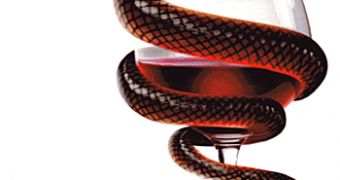It is clear that alcohol consumption can turn a gentleman into a rude beast. For the first time, a new research study published in The Journal of Neuroscience explains why. Social drinkers intoxicated with alcohol have lowered sensitivity in brain nuclei controlling threat detection, while displaying higher activity in brain nuclei connected to reward.
"The key finding of this study is that after alcohol exposure, threat-detecting brain circuits can't tell the difference between a threatening and non-threatening social stimulus. At one end of the spectrum, less anxiety might enable us to approach a new person at a party. But at the other end of the spectrum, we may fail to avoid an argument or a fight", said Dr. Marina Wolf, at Rosalind Franklin University of Medicine and Science.
The team at the National Institutes on Alcohol Abuse and Alcoholism employed functional magnetic resonance imaging (fMRI) in the case of the 12 healthy social drinkers in order to assess activity patterns in emotion-processing brain nuclei connected to alcohol exposure.
In two trials, each 45-minute long, the subjects received either alcohol or a saline solution intravenously administered and then they were asked to look at pictures depicting fearful facial expressions, one of the factors known to activate threat connected brain nuclei. On two other occasions, the subjects received both alcohol and placebo.
After the administration of the placebo solution, the fearful facial expressions increased in the subjects the activity of amygdala, insula, and parahippocampal gyrus, cerebral nuclei connected to fear and avoidance, but also the brain's visual system. The same nuclei showed no activity increase under the influence of alcohol. Moreover, alcohol turned on the striatal nucleus involved in the reward behavior, further confirming that the reward system is involved in alcoholism like in any drug addiction. The degree of striatal activity was directly connected to how intoxicated the subjects felt.

 14 DAY TRIAL //
14 DAY TRIAL //